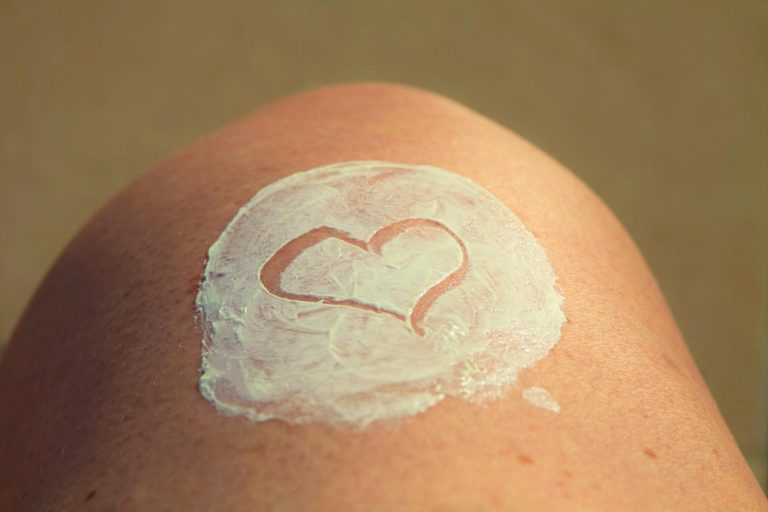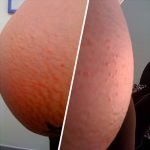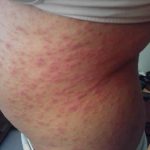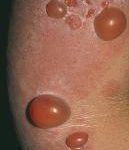- Citas Centro Médico de Caracas: Lunes, Miercoles y Viernes. Pulse el botón Agende una Cita
- Sistema de citas en linea exclusivo para Centro Medico de Caracas en San Bernardino
- Citas CMDLT: Jueves. llamar al 0212-9496243 y 9496245
- Las Emergencias son atendidas en CMDLT previa coordinacion personal al 04142708338
- Proveedor Seguros Mercantil y Sudeban

The skin of the pregnant woman is subject to profound changes during pregnancy, most are physiological but pathological conditions known as Gestational Dermatoses can occur. Some may be annoying from the aesthetic point of view but we believe that the discomfort is fully justified; In addition, many of them are reversible or partially reversible or can be treated by dermatological procedures. Some Dermatoses can be related to fetal problems.
The sensation of heat and progressive reddening of the skin that is observed in pregnancy (especially in white skinned women) is due to vasodilation and is something normal and expected, due, among other things, to the effect of progesterone.
Pigmentation
Chloasma (melasma) gravid ( 50-70%): is a superficial light brown pigmentation that forms on the cheekbones, forehead and / or in the region of the lips as pregnancy progresses, especially noticeable in brunettes exposed to the sun . Partially gives up weeks after the pregnancy ends and in some cases may require treatment. It can also occur in women who use oral contraceptives and in others without an apparent reason beyond frequent exposure to the sun.
Line nigra (70-80%): it is the brown coloration of the midline of the abdomen, especially below the navel. It is partially cleared after pregnancy. In most patients there will always be some pigmentation and will not respond to dermatological treatment because the tissue staining is deep. Maybe the Laser may have some use
Areola and nipple (100%): they acquire a darker shade during pregnancy and lactation, the darker the patient’s skin, the darker the acquired pigmentation. It is irreversible although it improves somewhat over time. Plastic surgery can reduce the diameter of the areolas.
Hair
Fall or effluvium : during pregnancy the hair tends to grow quickly with little fall but during the first weeks postpartum the hair is replaced by a large hair loss (more than 100 hairs a day). It generates anguish but there is no net loss of hair since it is being replaced immediately
Male baldness : sometimes you can see thinning and loss of frontal hair (male pattern) in some women with a family history of baldness. This is reversible and never presents a real baldness.
Hirsutism : in some women there is an unexplained growth of body hair in areas such as the chin and the bozo after the 20th week of pregnancy. It disappears at the end of pregnancy.
Vascular
Palmar erythema (90-100%): it is the reddish (and hot) color of the hands (and feet) due to the vaso dilatation of pregnancy. It disappears a few days after the birth of the baby.
Vascular spiders (60-70%): medically called telangiectasias, correspond to the growth of superficial capillaries by hormonal effect, are 1-2 cm. of diameter and can appear in any part of the body, although they are more frequent in the lower half. They partially disappear during the postpartum period.
Hemangiomas : or blood spots, are due to the localized growth of the venous capillaries at a point the size of a pin to a couple of millimeters. Almost all disappear when the pregnancy ends.
Varicose veins: it is the dilation or congestion of the venous system that makes the superficial venous network more visible due to an increase in blood volume, venous compression by the pregnant uterus and hormonal venous relaxation.
Cutaneous surface
Fibrous mollusk (acrocordón) : they are small cutaneous warts of a few millimeters of diameter that appear after week 20 of the pregnancy; They have a predilection for the base of the neck, the armpits, under the breasts and the groin. Small ones disappear but larger ones can be eliminated locally if necessary.
Cutaneous erythema: it is the reddish or bluish-red coloration that the pregnant woman’s skin takes, such as occurs in palms and plants. It is noticeable in the abdomen and especially in the legs, where the dye may be bluish due to the venous stasis that occurs if the patient is standing or sitting for a long time. When pressure is applied, the skin becomes bleached for a moment, leaving the impression, for example, of the hand.
Stretch marks (50-90%): the most famous skin lesions of pregnancy are manifested by the appearance of reddish lines, as if tears were treated (and is that they are tears of collagen and elastin), abdominal skin, the hips, buttocks and breasts. They can generate local itching. They become clear over time, acquiring a less obvious shiny pearly shade but never disappear. No cream has been shown to prevent them , it is a matter of quality and elasticity of the skin. They are more frequent when there is rapid and voluminous uterine growth: multiple pregnancy, polyhydraminos, bulky fetus.
We use with some benefit, at least symptomatic (itching), cocoa butter and glycerinated alcohol. Both options for topical use and very low cost. If there is intense itching, you can use calaminol applications, moisturizers, antihistamines or soft steroids in alcohol based gel or creams. Cold compresses can be useful. In some patients the heat generates more itching and a cold bath is of great help. Some patients have reported improvement with the use of ice packs with Chamomile Tea.
Why do creams have little effect? Because the origin of the striae lies in the internal rupture of the cutaneous architecture, especially of the elastic fibers: Marked disruption and aberrant regulation of elastic fibers in early striae gravidarum, British Journal of Dermatology, Nov 2015. DOI: 10.1111 / bjd.14027
Pruritic Urticarial Papules and Papules of Pregnancy (PUPPP) or Polymorphous Erythema of Pregnancy
They are red, very pruritic papules and plaques on stretch marks in the third trimester of pregnancy. It affects less than 1% (1 in 200) of women and rarely occurs in later pregnancies. Improvement with certain therapeutic measures and finally disappears in a few weeks during the puerperium , does not affect the health of the baby or leave sequelae in the mother
The papular lesions appear initially in the abdominal striae and then spread to the chest, arms, buttocks and legs. There are NO lesions on the face, palms or soles of the feet. Although aesthetically pleasing, the main discomfort of the mother is intense itching, especially if vesicles appear and the papules converge to form somewhat larger plaques.
The treatment used is based on oral antiallergics (Zyrtec, Claritine, loratadine), topical antiallergics (Andantol gel), moisturizing creams and topical steroids (Diprosone, Demiderm), in severe cases steroids can be used orally or injected.
Gestational Prurigo
Very similar to PUPPP but has a tendency to appear before week 26. It has a greater allergic component. Therapy equal to PUPPP.
Gestational Pengifoid
Autoimmune condition that produces vesicles and blisters on the skin. Very weird It does not affect the baby. It may require hospitalization.
Intrahepatic cholestasis
Cutaneous itching without obvious lesions. Uncommon, frequent in Chile.
For a more detailed review of these conditions (in English) visit this link. There is a small list of them, the most frequent is the PUPPP.


